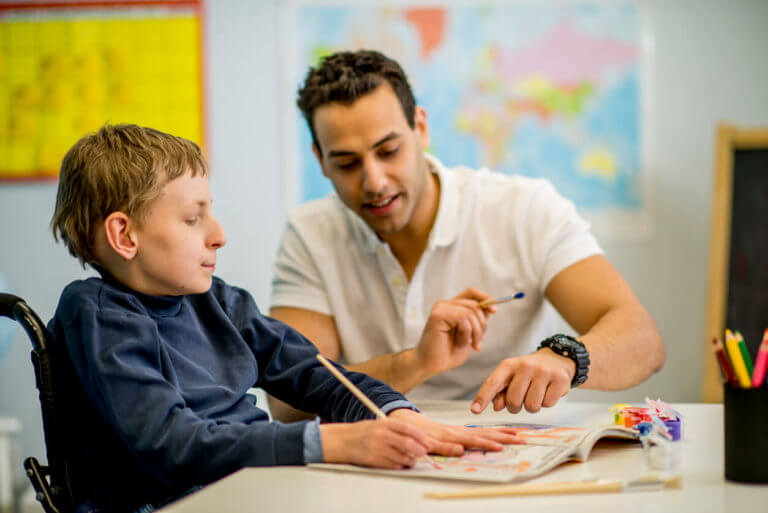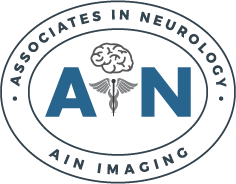
Lack of mobility and muscle strength can be a huge obstacle for individuals with cerebral palsy. This neurological disorder, which affects movement and coordination, can greatly impact day-to-day activities such as walking, writing, and even sitting up straight. While there is no cure, there are various cerebral palsy treatment options available that focus on improving mobility and strengthening muscles to help individuals lead more independent lives.
Let’s delve into the different methods of treatment for cerebral palsy.
What is Cerebral Palsy?
Cerebral palsy is a condition that affects how a person moves and how their muscles work. It happens because of brain damage before, during, or right after birth. Some kids might have mild symptoms, while others face bigger challenges.
Early Signs to Look Out For
Parents should check for early signs of cerebral palsy. These might include difficulty reaching milestones like sitting up or walking, trouble with coordination, and muscles feeling stiff. Finding these signs early can lead to treatment that makes a big difference.
Why Cerebral Palsy Treatment is Important
Treating cerebral palsy early can improve a child’s life. With the right support, kids can move better, get stronger, and become more independent. Let’s learn about different cerebral palsy treatment options.
Physical Therapy
Physical therapy is an important part of cerebral palsy treatment as it helps improve movement, balance, and coordination. Therapists use exercises to make muscles stronger and to help with moving around.
Techniques Used in Physical Therapy
Therapists might use methods like stretching, strengthening exercises, and balance training for cerebral palsy treatment. These activities are tailored to each child’s needs to make sure they benefit as much as possible.
At-Home Physical Activities
Parents can help their children improve by doing exercises at home. Simple activities like playing catch, stretching, and practicing walking can support what they learn in therapy.
Occupational Therapy
Occupational therapy helps kids learn the skills they need for everyday life, like dressing, eating, and using the bathroom. These skills are important for being independent.
Adaptive Equipment and Tools
Therapists might suggest special equipment to help your child with cerebral palsy. Things like special utensils, dressing aids, and mobility devices can make daily tasks easier and boost confidence.
Involving Parents in Therapy
Parents are important in occupational therapy for cerebral palsy treatment. By practicing skills at home and giving encouragement, you can help your child become more independent.
Speech Therapy
Many kids with cerebral palsy have trouble speaking. Speech therapy helps them learn to communicate better, whether by talking, using sign language, or using special devices.
How Therapists Help
Speech therapists use different tools to improve speech, like exercises to make mouth muscles stronger and practicing sounds. They might also use devices to help kids who can’t speak.
Practice at Home
Parents can support speech therapy by encouraging kids to communicate at home. Reading books, singing songs, and chatting are excellent ways to practice speaking.
Medication
Some medicines can help with tight muscles and reduce pain. These medicines relax the muscles, making it easier for kids to move.
Types of Medicines
Neurologists might give muscle relaxants or other medicines based on what each child needs. It’s important to follow the doctor’s instructions and watch for side effects.
Working with Neurologists
Regular check-ups with the neurologist make sure the medicines are working well. Talking openly with a neurologist helps adjust treatments as kids grow.
Assistive Technology
Devices like wheelchairs, walkers, and braces help kids move around more easily and do different activities on their own.
Helping with Communication
For kids who have trouble speaking, communication aids like tablets or picture boards help them share their thoughts and talk to others.
Using Technology Every Day
Using assistive technology in daily routines helps kids with cerebral palsy do well. From school to playtime, these tools give them the support they need to succeed.
Alternative Therapies
There are many other types of alternative therapies that help improve muscle strength and quality of life in patients with cerebral palsy.
Aquatic Therapy
Aquatic therapy, also known as water therapy, uses water to help strengthen muscles in individuals with cerebral palsy. Water supports your body and eases pressure on joints, making it great for kids with cerebral palsy.
Hippotherapy
Hippotherapy is about riding horses to improve balance, coordination, and muscle strength. The horse’s movement gives special feedback that helps kids with cerebral palsy.
Music Therapy
Music therapy uses music to help with physical, emotional, and thinking needs. It can make motor skills better, lift mood, and give kids with cerebral palsy a fun way to express themselves.
Cerebral Palsy Treatment in Southeast Michigan
If you are a parent or caregiver of a child with cerebral palsy, don’t hesitate to reach out to us for professional guidance and support. At the Associates in Neurology, you will find a wealth of resources, including expert advice on treatment options and access to specialized therapies tailored for children with cerebral palsy.
Our neurology specialists will assess your child’s unique needs and ensure that they receive the necessary interventions to maximize their cerebral palsy treatment outcomes.
To learn more about cerebral palsy treatment or to schedule a consultation, call us today at (248) 478-5512 or use our appointment request form. We look forward to serving you!


